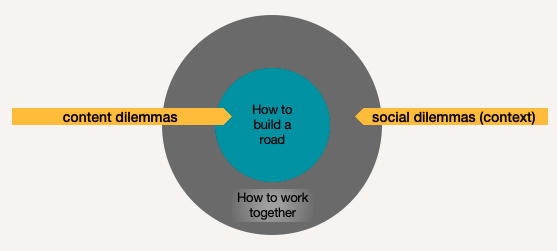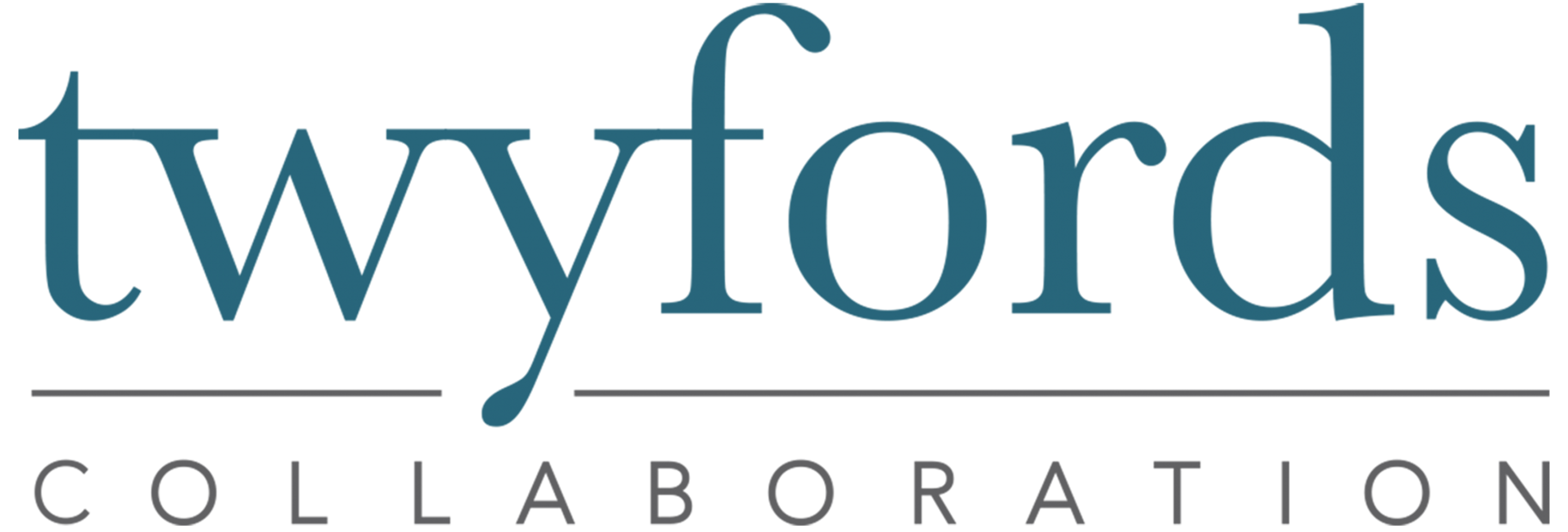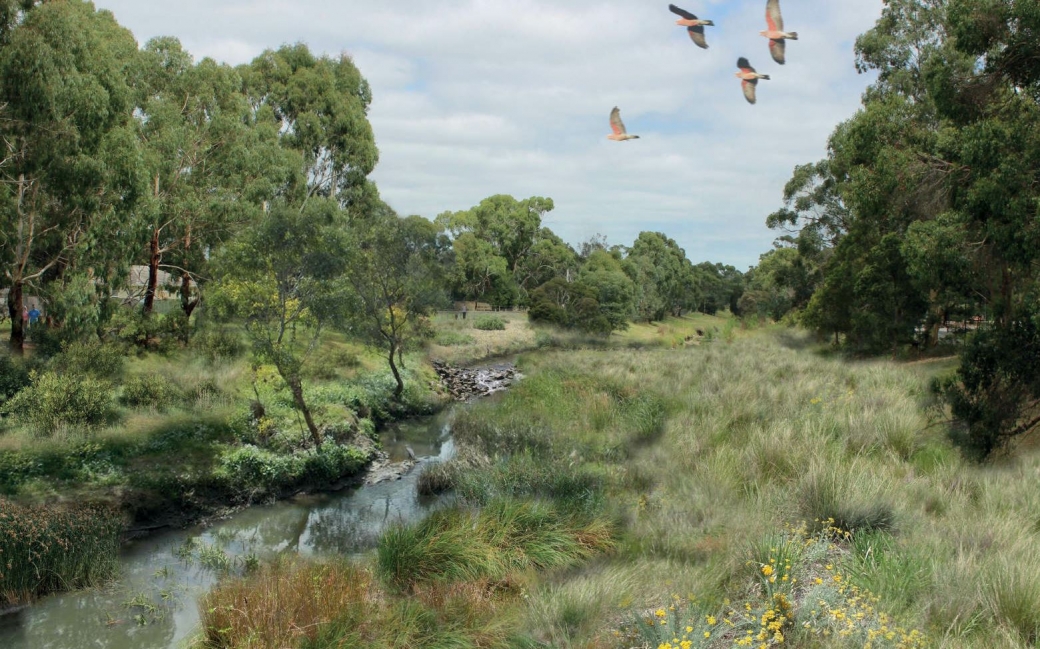Sure signs it is time to reset your collaboration
How to diagnose the health of your collaboration
When people are authentically and effectively collaborating, it’s an amazing thing to be a part of. But as we know, not all collaborative experiences are quite so positive. Sometimes it feels more painful than it needs to be. While we work hard at working together we continue to come up short on delivery of outcomes. We see argument when we want innovation and low commitment when we want buy-in.
If this feels like you, don’t despair. There are ways to reset and get your collaboration back on track. But first, how would you recognise that it’s time to reset your collaboration? In our experience, strong indicators include:
- unsatisfying delivery of outcomes
- people agreeing in meetings then disagreeing later
- a lack of face to face engagement. People reverting to email ‘wars’
- obvious friction in meetings, high stress, low morale
- lack of commitment to taking action
- people feeling left out and unappreciated in the relationship
- people pushing their own agendas and solutions
- not much listening
- information being hoarded and ‘weaponised’
Most organisations understand the need to work differently in collaborative partnerships and many start well. But there is growing evidence that a lack of understanding about what it takes to collaborate means many well-intended collaborative partnerships struggle over time. In such cases it can be useful to reset the relationship, to get the work and the teamwork back on track.
But a reset can’t happen overnight. It needs more than a workshop. In our next blogpost we will be outlining how to reset your collaboration and get back on track to deliver great outcomes together.
Meanwhile, if you need to reset your collaboration, to find out how we can help to get you back on track.
What migraines taught me about overmanaging
I suffer occasional migraines which can be quite debilitating, especially at work when you just can’t concentrate and you just want to lie down and close your eyes.
I now manage them overnight with some specific medication, but previously they would impact me when I was facilitating group work.
On one occasion I was working with a group and was keen to help them get a good outcome. I would usually ensure the process was well designed and organised, pay close attention to the relational dynamics, and intervene throughout to help them.
In this case, I woke with a migraine, and dragged myself to the meeting feeling pretty terrible. Given my state I did the minimum setup and just relied on the group starting the conversation about the topic. Feeling as I did I had no energy to intervene, so just had to sit there and let it happen around me.
To my surprise, I found the group functioned remarkedly well, and maybe achieved more in terms of both their relationships and the difficult topic than I could have hoped.
When I felt better, I reflected on my insight, and subsequently tested my hypothesis around intervening less.
My learning that day has helped inform my practice- that stepping back, intervening less, and trusting the group is powerful in getting better outcomes.
That doing less is actually more.
How to Disappear Completely
Sometimes when collaborating, doing less is doing more.
One of the most collaborative things I’m part of is a small . We perform an eclectic mix of songs, and among our several Radiohead numbers is one called How to Disappear Completely. As with many Radiohead songs I’m not sure what this one is about, but the message in the title resonates.
An idea I often share with those who facilitate diverse groups is that the less I do the more useful I am. It is a counterintuitive idea but I have come to realise that as I step back and stop trying to control the group, the group steps up, steps forward and takes accountability for their own work. Sometimes when collaborating, doing less is indeed doing more.
A simple example that always comes to mind is from some work I did years ago on behalf of a local council. They came to me looking for a “strong facilitator” to run a public hearing concerning a development application. The project was high profile and contentious and over many years a local group of strong voices had opposed the very idea. Knowing the hearing – essentially a public meeting – would be contentious Council seemed to be looking for someone who could control the room and ‘manage’ the ‘troublemakers’.
Initially I was tempted to suggest they hire King Kong, who might just stand some chance of meeting their need to make sure nobody misbehaved. But instead I took an opposite approach. I asked for the names and phone numbers of the obvious members of the ‘vocal minority’ and made a plan to call each of them.
I spoke to a number of people in the days before the forum. In each case I introduced myself, talked about the upcoming forum, asked if they would be there, and then I shared my dilemma with them. I told them I wanted to ensure the meeting was as useful as possible for everyone in the room. I told them what I was thinking as an agenda. I said I thought people in the room would be quite passionate, perhaps angry and checked that assumption with them. They all agreed. And I asked them how they thought I should run the meeting. What was likely to work for them and for others in the room. What would they do under the circumstances?
With their input I made some tweaks to the agenda, but that wasn’t really the point. The real intention was to signal that this was their meeting and I wasn’t there to control them, rather to help everyone in the room get what they could from a difficult conversation.
Then on the night of the event, as those I had spoken to arrived, I was able to great them, thank them for their input and check with them again what I was planning. I again invited them to help me keep the meeting constructive for everyone. As the meeting kicked off I shared with the room that I’d designed it with input from some in the room and again invited everyone to help ensure we all got what we could from the session. And then off we went.
Did everything go smoothly? No. Was there some yelling? Yes. Was I under pressure as the person at the front of the room? Sure. But at no time did I feel I needed to be King Kong. Together we navigated a tough meeting about a tough issue and all left with our dignity intact.
By letting go of the client’s (and my own) need to control people we avoided the power struggle and allowed everyone in the room to take responsibility for getting us where we needed to go. I still worked hard but by stepping back I encouraged others to step up.
In these situations we can easily be convinced that we need to be more controlling, exerting more power to ensure 'good behaviour' or 'effective outcomes' , but controlling less usually works better. This same dynamic is at play any time we work with other people. Rather than seeking more control to wrangle your stakeholders, it often pays to disappear, if not completely, then just a little.
Looking for some tips on how to manage when working with a diverse group of stakeholders? Check out some of our from our Collaboration System.
Overcoming the inertia- just try stuff
We often encounter clients who acknowledge the roadblocks to progress, but seem paralysed in their attempts to deliver substantive change.
I hear a lot of words like ‘until’ and ‘when’ and ‘if’ :
- when the restructure is complete, we can change how we work
- if only I could get commitment from the leaders, then we could try that
- we just need to get the plan sorted, then we can tackle that issue
- when we have built the strategy, we will be able to work differently
- if only people would step up and take responsibility, then I wouldn’t have to keep fixing things up
And the reality is that we never get there- we are always waiting!
It reminds me of Judy Garland and that song - ”Somewhere, over the rainbow…..” , in the hope that our dreams can come true.
Of course the last line is quite prophetic in this context- “Why, oh why can't I?”
Interestingly I also see a frustration from leaders in response to such comments…
- I’m committed, how many times do I have to tell you…?
- you don’t need to wait, we can do it now…
- they can take the lead without us….
I’m intrigued by this dynamic, and hypothesise that experimentation could be a way to break this seeming impasse.
So what might such experimentation or piloting look like?
Rather than needing to know, to wait, to be sure, then perhaps a way forward is an ‘and’ ie to do something while still waiting and planning, etc
This would mean actioning a series of small parallel actions to address the topical issue, while still working on the roadblocks:
- working in a new structural arrangement while organising the restructure
- assuming commitment is there and taking some different actions based on that assumed commitment
- trying something while developing the plan
- trying two ways to tackle the same issue rather than relying on the favoured option
- testing elements of the strategy before it is released
- saying yes to something where the natural and safe option is to say no or avoid taking it on
It would seem to make sense to select small initiatives that you feel OK to try, and that wouldn’t compromise critical aspects if they didn’t work, but may inform you with alternative pathways to success.
Perhaps just ‘trying stuff’ (and living with a degree of uncertainty) can overcome that frustrating feeling that we can’t progress.
Experimenting with Siri
In which some experimentation with Siri got me where I needed to go.
Yesterday afternoon was a typical one for me in many ways. At 2:30 or so I jumped in the car for the three-and-a-half-hour drive to Lake Macquarie City Council to run an intro to collaboration workshop for new and returning Councillors. I have done that drive so many times that I have long suspected that my car could drive itself.
If only.
Turns out there had been an accident on the M1 Motorway and traffic was backed up to a hopeless degree. Soon Siri was telling me I was going to miss my workshop start time by 60 minutes. I needed an alternative!
I had no idea if any alternatives would be better. I didn’t yet know what the problem was, where or how bad. I was trapped in the limitless traffic snarl that was Northwestern Sydney. Yet I couldn’t afford to sit where I was, so I recruited the ever faithful Siri into a process of experimenting the way forward together. That means, I developed some quick hypotheses about alternative routes and tested them. Importantly, I needed to try only those ideas that were safe to fail, that is, that were likely to be no worse than the current scenario. And as the current scenario had me arriving way too late to deliver my workshop, I had some scope to try other ideas, even if they didn’t feel quite right.
So, I picked an alternative destination along my route and Siri plotted the course. She directed me to some odd places but at least we were moving. And then I turned on the radio to check the traffic reports and I quickly gathered some data that Siri didn’t have, about the specific accident and likelihood of clearing up. This gave me some other ideas, and with Siri’s help we tested some new alternatives. One seemed likely to be better so we tried it.
Stop…start…stop…start…stop…. This wasn’t looking good and my goal seemed unachievable. Then more data came via the radio. It seemed that the accident had been cleared up. Siri was directing me to turn left but based on the new data I developed a new hypothesis and went right instead. Good old Siri stuck with me even though I ignored her ideas and, as fortune would have it, the traffic began to move and we were on our way.
The workshop was scheduled to begin at 7:10 and I pulled into Council’s carpark at 7:09. Job done, though I was feeling a little frayed around the edges after close to five hours of traffic jam. But when we collaborate through complex, uncertain and challenging problems it’s not unusual to feel a little exhausted.
Siri and I got where we wanted to go through a process of testing and learning the way forward together. At no time could I be sure that my choices were going to work, but I didn’t let that paralyse me. Instead I embraced the uncertainty and experimented creatively. By good luck and good management we found a solution in a very dynamic and unknowable situation.
I learned two things on my journey to Lake Mac last night. Firstly, this experimentation thing really works. And secondly, Siri could teach us all a thing or two about collaboration.
Iconic relationships for iconic waterways
Can we have an iconic waterway without strong collaborative relationships?
Some years ago I was lucky enough to work with the team and stakeholders establishing what is now the Chain of Ponds project, a collaborative effort among diverse stakeholders from across government agencies, residents, local businesses, local councils etc. Together they were on a journey to improve the state of the Moonee Ponds Creek in Melbourne.
They had been meeting for some weeks to explore the Chain of Ponds ‘dilemma’ in all its complexity. They could see that the problems involved farming practices, urban drainage management, the behaviour of walkers, residents and local businesses, agency management practices and state and local planning decisions. Adding complexity were some poor relationships, confusing governance arrangements and unclear accountabilities.
As an important step in their collaborative journey the group spent time creating a shared sense of the direction, what we call a Light on the hill, designed to guide them in their solution-finding process. After lots of conversation and deliberation the group landed on “Moonee Ponds Creek is an iconic waterway” as their light on the hill and shared project destination.
I liked this shared direction, particularly because it was created and owned and understood by the group. They had grown this simple idea from their deliberations and for them it worked to inspire and get them moving together towards something they believed in. I see on the website that it still does (with some tweaks).
Yet in recent times I’ve come to understand that there could be more in this light on the hill. I’ve realised that to be most useful the shared direction can include important aspects of the relationships and other context around the water quality dilemmas. That’s because we can’t achieve an iconic waterway without also working on the system of relationships and interactions between the people and groups who hold the fate of the creek in their hands. If poor relationships persist, how can people work together differently? And if they can’t work together differently, how can they expect different outcomes for the creek?
Recently I’ve encouraged groups to add to their light on the hill some of the less obvious aspects such as good governance, high levels of trust between stakeholders, evidence-based decision-making or effective collaboration.
With these more relational aspects visible, groups are able to work towards a healthier collaborative effort as a critical part of working towards a healthier waterway. After all, an iconic waterway is going to depend upon iconic relationships. I’m sure the Chain of Ponds Collaboration understand this and I know they are working hard on their relationships. But I do wonder whether a more complete light on the hill could have made things clearer from the outset. It certainly helps me shift my focus.
We have been working on some new tools lately to help groups identify their shared light on the hill, including the more challenging relational aspects. Get in touch to find out more.
Shared Direction- “What does good look like?”
I was working with a client late last year in an alliance meeting and the discussion turned briefly to the quality of the relationships. There had been a history of poor relationships between the client and an alliance partner which was affecting project delivery, and the group was reviewing a list of activities they had developed to get the project working effectively.
While a lot of the emphasis was on the business activities like road maintenance, asset renewal, etc, the team had also identified some other key contextual issues they felt needed attention if the goal of improved performance was to be achieved.
These include smooth communication, improved trust, good relationships and inclusive culture.
One of the senior managers asked some useful questions that got the group thinking- “what does good look like?” and “how would you measure good?” in regard to improving the relationship.
It highlighted a bit of a shortcoming in the work the team had done in generating the improvement plan- the list of actions that was intended to get the project back on track.
While they had a solid picture of what improved performance would look like around the technical aspects of the project (eg road maintenance), and also had some tangible indicators to evaluate process, they were lacking similar rigour for the contextual issues, which were recognised as essential to sustaining the technical improvements.
It prompted them to spend time in thinking through the answers to the two questions for each of the contextual issues.
For example: They shared their perspectives on what a ‘good’ relationship might look like/ feel like/ sound like, and came up with a picture or “light on the hill” to guide their activities.
It now supports them as they work together by guiding their behaviour as they can ask a question like “is what I’m doing helping move us towards that intent?”
And they also developed some indicators around that picture of success- subjective measures to evaluate whether they were making progress in the right direction. One they experimented with was “scoring” a relationship checklist monthly.
The team now see that it is essential to be clear on what success looks like for both their technical or content challenges, as well as their contextual or social challenges, to be confident that the solutions that emerge will be resilient and sustainable. Ie the value of that “Light on the Hill”
Trusting the data in co-design
Revealing the hidden dilemmas when collaborating
I was working with a client a few years ago, and he was a bit stumped.
He was leading a team working on improving performance in the health system, and was facilitating a collaborative initiative between nurses and a number of health districts (hospitals) on the vexed question of staffing and resourcing. A big emerging issue was nurse ratios ie number of nurses to patients, and the task was to work out an acceptable level that the nurses union would support, the hospitals could afford, and was politically acceptable to the Minister.
As part of the work, his team had been trying to gather data from the health districts about the current situation, but they were struggling as the hospitals seemed unable to provide the data. He speculated on a number of technical reasons why they couldn’t get the job done, and was at his wits end as to how to proceed- “I’m out of tools in my toolkit” he said.
When he was prompted to asked some different questions ie why is it so hard to get the data?, he was able to tease out a new perspective (for him!)
He discovered that all the data was readily available, but wasn’t shared because of the lack of trust between the hospitals and his team, and the nurses union, and the Ministers staff.
The hospitals felt they would probably be disadvantaged with any solution, as had happened to them previously. They certainly didn’t feel safe to admit to that lack of trust, so the reasoning focused on the content- we don’t record that information, we can’t access those records, etc
My client’s work then shifted to building a new relationship with the hospital hierarchy to build sufficient confidence to share information that could help them tackle key issues together.
On reflection, my client recognised that they had been focused on the content aspects of the problem (ie the data), and learned new skills and thinking that enabled him to identify the less obvious contextual issues that were also critical to finding shared solutions.
Are you looking below the waterline?
When collaborating it pays to explore the hidden aspects of your complex project.
Have you heard of Lisa Blair? Last year she completed her second (!!) solo sailing venture around Antarctica, with the aim of raising awareness about climate change. You can learn about her amazing story here.
Watching Lisa’s journey I couldn't help but imagine what it would be like to sail the Southern Ocean. It’s dangerous isn’t it? After all, it’s cold down there! Has Lisa watched Titanic? Has someone told her about icebergs?
I have a thing about icebergs. As we know, most of their bulk sits below the waterline, their shape and scale and details unknown. And while I’ve never been near one, I feel I often encounter something similar when working with groups on complex problems.
Dilemmas in your content and your context
You see, when groups work together on challenging problems or projects, the problem seems visible and known. It’s the reason people come together in the first place, to deliver a project or fix the problem they can see. Yet I have learned that the bulk of the complexity usually sits invisibly below the surface. And as we all know, it’s the bit of the iceberg below the waterline that sinks the ship.
For example, on a big highway upgrade project I’ve been involved in, the visible problem is how to build the road. But poke around a little bit and it becomes clear that there is more going on. Watching the teams at work I can see that lying just under the surface are questions about lack of trust, competition, cultural differences, the need to be right and a reluctance to be seen to be wrong, to name a few. Each of these sharp angles can rip a hole in any collaboration.
Note that this is no criticism of the project teams. These types of human and relational issues are always present whenever people get together around a challenging project. My roading folks actually had the awareness to seek help to surface and deal with it. They recognised that their ‘content’ question – how do we build the road – exists in a context of social dilemmas that we might summarise as how do we work together in order to build the road?

Successful collaborators recognise both the content and the context, the visible and invisible elements of their project problem. By acknowledging the context elements and finding ways to work on them as they work on the content, great collaborators are able to make progress where other groups might founder.
Are you tackling your context as you work on your content? I will be discussing ways you can do this important work at our first collaboration workshop of the year. Register .
Just Try Stuff....
I was prompted by Stuart’s blog to dig a little deeper into one of the learnings from the pandemic.
“Just try stuff” was about recognising that a key characteristic of a complex situation like a pandemic is uncertainty about what to do, and about the only thing you can do is to try something and see what works.
We have seen that happening constantly through the last 18 months, both in responding to the health crisis, and also dealing with the social and economic consequences.
What has been interesting to me has been the shift from an initial belief that we knew what to do and could predict and plan actions, to a growing realisation in the value of trying a range of approaches, while keeping a close eye on the results, and then modifying quickly based on the results.
Now while it did seem a bit like they were “experimenting” on us, there is little doubt that keeping everyone as safe as they could while learning what worked has been a feature of the response worldwide.
And while our leaders have copped some criticism for their approaches- slow to respond, inconsistent, etc, perhaps they were being judged by conventional thinking that just doesn’t work when challenged by this level of unprecedented complexity.
The features I think we learned around action planning that we can take into our ongoing co-design activities include:
- feeling a bit uncertain is a characteristic of tackling complex situations
- it’s OK to be unsure what to try next
- letting go of the “right answer” is hard but appropriate
- multiple small and short “experiments” make much more sense when tackling complexity
- keeping the activities “safe to learn” is key to gaining support
- reviewing progress regularly against the goals provides confidence
- and not being afraid of ending something and trying something else based on the results
So while we still haven’t yet “solved” the pandemic, it has allowed our political, business, health and community leaders to see that “trying stuff” rather than always knowing what to do is a useful alternative approach in our complex and ever changing world.










